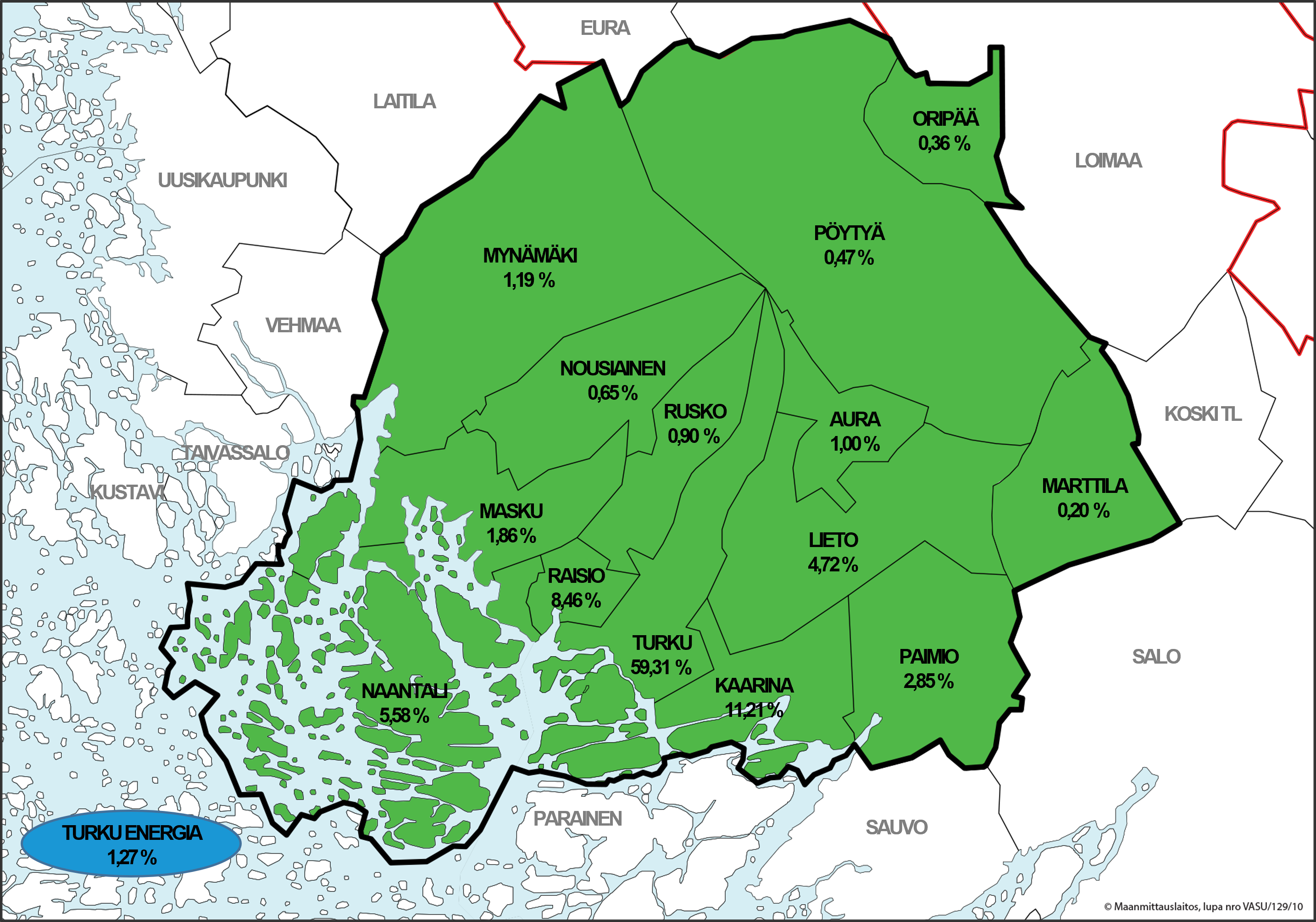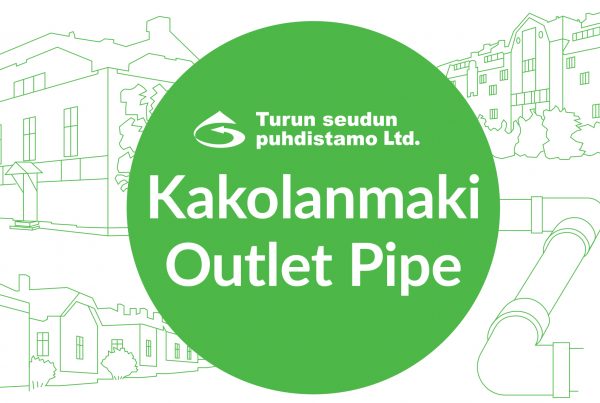Operation
The Kakolanmäki wastewater treatment plant is a 4-lane wastewater treatment plant, based on mechanical, chemical and biological treatment processes. The purification process is very efficient: the plant removes up to 99% of organic matter, phosphorous and solids (requirement 95%) and 79% of nitrogen (requirement 70%) from processed water.
Wastewater enters the plant’s intake pumping station, via tunnels from two different directions. From the intake pumping station, the water is led to screening and sand separation, where coarse matter is mechanically removed from the water. In order to facilitate the treatment process, air is also added to the wastewater during sand separation, since wastewater usually becomes anoxic as it passes through sewers.
Before moving on to the primary clarification phase, a chemical is added to the water, in order to remove phosphorous. In primary clarification, some of the solids in the water are removed by allowing them to settle at the bottom of the treatment basin. These solids contain high amounts of phosphorous. The raw mixed sludge that is collected into the clarification basin’s sludge pockets during the clarification process is pumped out to an intermediate storage and then onwards to sludge centrifugation.
In the aeration phase, microbes are used to remove organic matter and nitrogen from the water. Different microbes are used to remove different substances, and each microbe requires specific conditions, which is why the water passes though both aerobic and anaerobic compartments during the aeration process. In the aerobic compartments, air is injected into the water from the bottom of the basin, while in the anaerobic compartments, the wastewater is mixed with large mixers. Nitrogen is removed in both aerobic and anaerobic compartments, while organic matter is only removed in aerobic conditions.
In the secondary clarification phase, the microbe mass that is mixed in with the wastewater during aeration is removed by allowing it to settle at the bottom of the treatment basin. Most of the phosphorous in the wastewater is also removed through this settled sludge, while the now clear water moves on to the next stage of the purification process. The removed sludge is conducted as return sludge back to the aeration phase, where surplus sludge is removed from the process by way of primary clarification.
The next stage of the treatment process is sand filtration, where the water is filtered through a layer of sand.
After sand filtration, the treated wastewater is directed to the final stage of the purification process: UV disinfection.
In order to increase the reliability of the process, the plant also utilises a two-line by-pass water treatment unit, which is used during peak flow times to chemically process wastewater after it has passed through primary clarification.
Once the plant’s treatment process is complete, the purified water is discharged into the Linnanaukko harbour basin in Turku.
The sludge that is removed from wastewater during the treatment process is dried using centrifuges and stored in silos. The centrifugation that takes place at the plant is only a small part of the overall sludge treatment process. The dried sludge is transported by tank trucks to Gasum Oy’s biogas plant at the Topinoja waste treatment centre, where the actual sludge processing takes place, using anaerobic digestion and post-composting.
The Kakolanmäki wastewater treatment plant also features a heat pumping station. Oy Turku Energia uses the heat pumping station to extract some of the thermal energy from the wastewater to produce heat for district heating purposes. The water that is cooled down by the pumping station is also used for district cooling.



